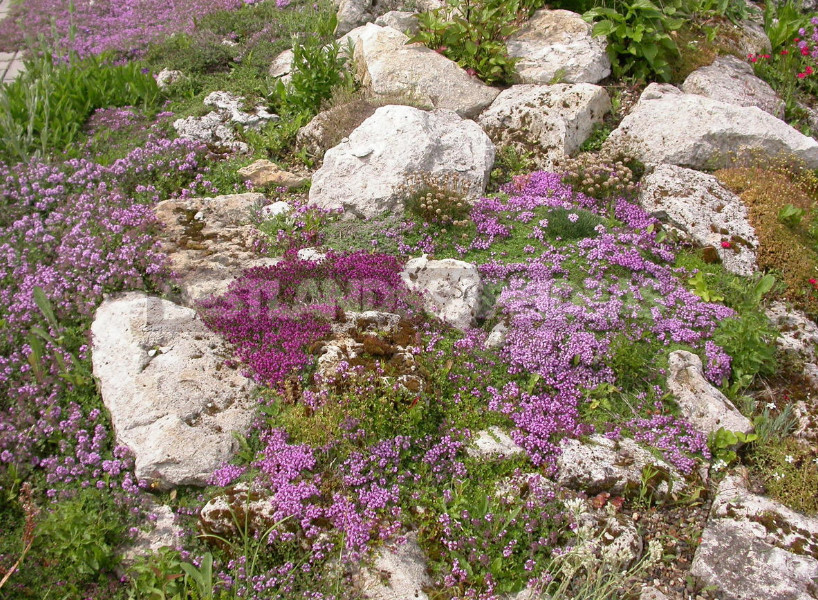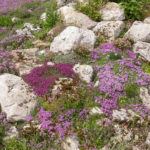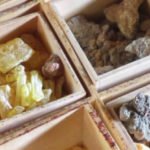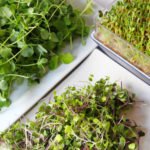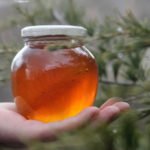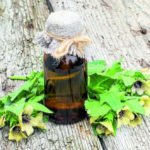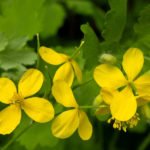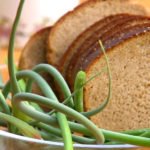Thyme is power! At least, so believed the ancient Greeks, who gave the plant a name. “Thyme” means “power.” But not only – also “spirit”. Because the Greek “incense” is also thyme.
It was also called the “herb of good”, its decoctions in goat’s milk was used as a remedy for grief. In our day of practical interest in this ancient pot is not diminished.
Thyme in the garden
Thyme decorate the garden all season. These are not empty words. Very good air-filled lilac, pink, purple spots Thymus vulgaris and Thymus citriodorus in the curbs, in the collection of perennial plantings, in the foreground mixborders. At the base of the thyme Bush can be planted bulbous, blooming at the beginning of the season. Their peduncles as if “germinate” through branched stems and rise above the green hats or rugs are not yet flowering thyme.
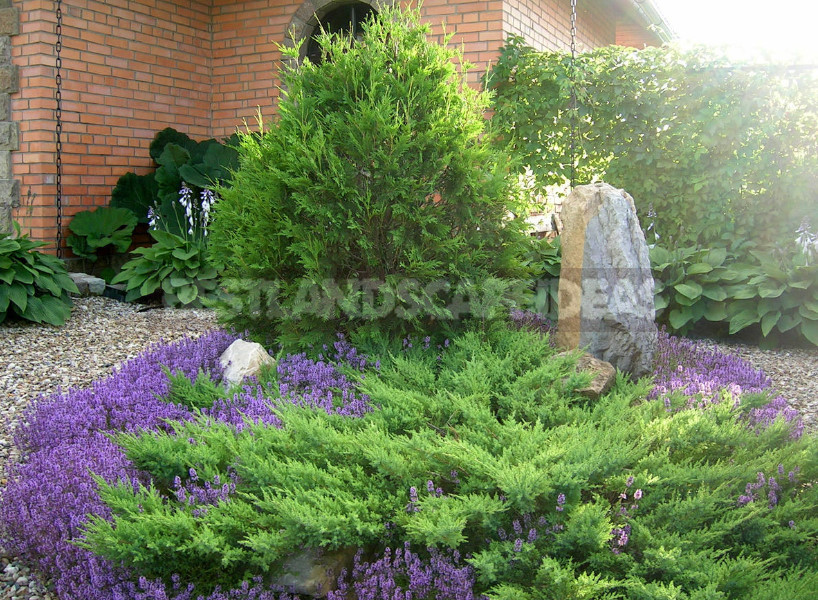
Thymus serpyllum is very good for slides, rockeries, dry streams. It can be grown between the paving slabs, but in this case the plant should be treated more carefully and be careful not to accidentally trample. Filigree twigs in the spring, neat green rugs with thousands of harsh, small leaves, abundant flowering, make the plant decorative all season.
Thyme from the point of view of botany
But here’s the paradox: such a well-known, pleasant, and useful plant accurately described from a Botanical point of view was a very difficult matter. I read all I could about the thyme, but with each new book my confusion only increased: the uniformity in the description of the species of thyme in them completely absent. Moreover, in some sources it was reported that the genus thyme contains only about 35 species, in others – all 400. In the six-volume book “Plant life” it is noted that there is still no unity in the view of the Botanical signs of the plant belonging to this genus.
Comforted me high professional and connoisseur of plants. In his books, he writes that many types of thyme are very similar, often the differences between them are negligible, moreover, it is possible to form spontaneous hybrids. Therefore, errors in the names of thyme are very likely.
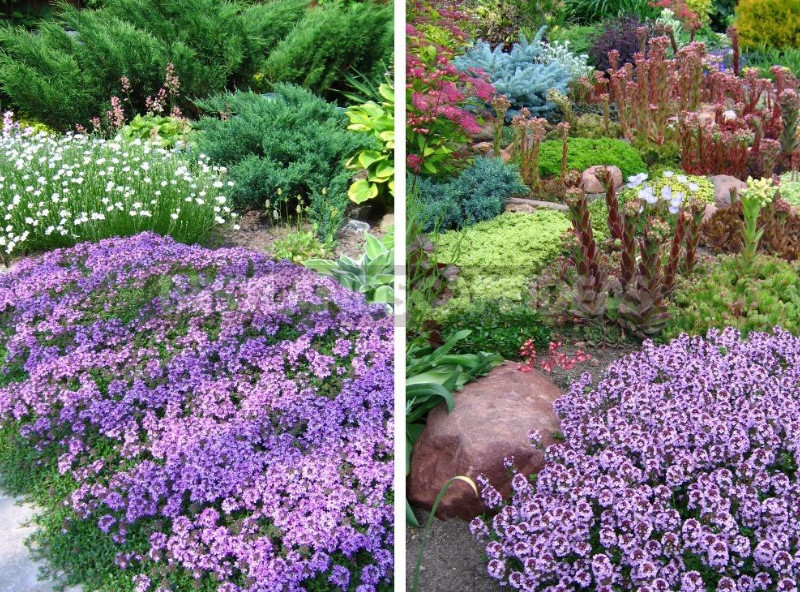
All Thymus – very beautiful small plants belonging to the family Labiatae. These are small shrubs with strongly branching stems. Thin lignified stems in some species are tightly pressed to the ground, in others – slightly raised. Young shoots densely leafy. Leaves smooth or to varying degrees pubescent, with very short stalks or without them, located on the stems opposite.
Usually in winter thyme leaves go with leaves, but when the spring there are numerous green shoots on lignified last year’s shoots leaves gradually die off, and the stems are bare. Young stems is very much, and most plants bare stems does not lead to a loss of decorative. Otherwise, the flaw is easily eliminated with the help of agricultural techniques.
At the ends of young shoots in different species from may to August, there are inflorescences up to 2 cm in diameter. In some species they are glovate, others are supplemented with whorls growing from the axils of the upper leaves. The flowers are small, double-colored, painted in different shades of lilac and pink, rarely white. Flowering is abundant. At this time, thyme is extremely good.
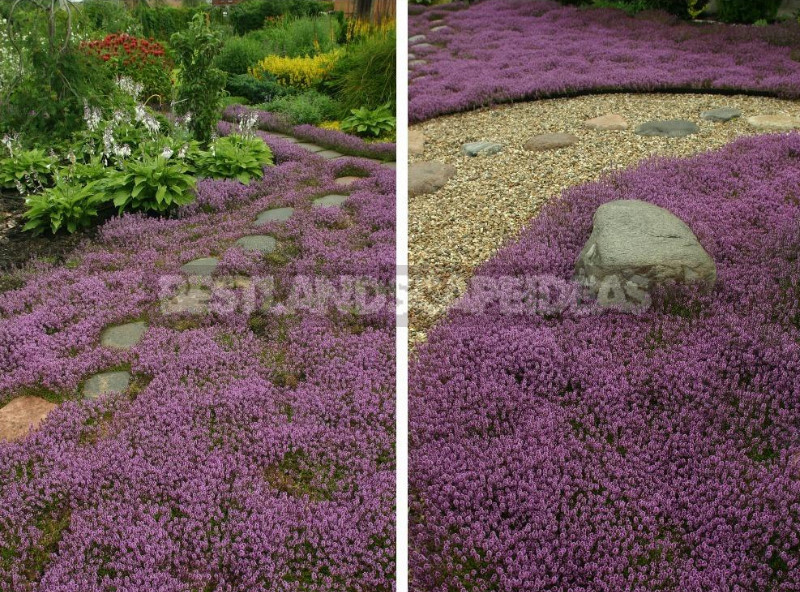
The area of thyme is wide. They are found in the temperate latitudes of Eurasia, in North Africa. Plants like to grow on the Sunny side of mountain slopes or elevated areas with sparse vegetation, often on sandy and marginal soils.
Types and varieties of Thymus
And yet, despite the difficulties, try to figure out what kinds of thyme we grow in the garden.
Thymus vulgaris
Thymus vulgaris comes from the southern regions of Europe. It forms small bushes, the height of which can reach 30 cm. Compared to other species grown in the garden, it is the largest plant. Quite actively growing, forming a moderately dense pillows.
Glossy, slightly pubescent oval leaves up to 12 mm long with rather dense fabrics are painted in dark green color. In spring, young shoots are often painted in a thick purple color. Soon the leaves on the outside turn green, their color becomes dark green, and the back side can remain purple all season.
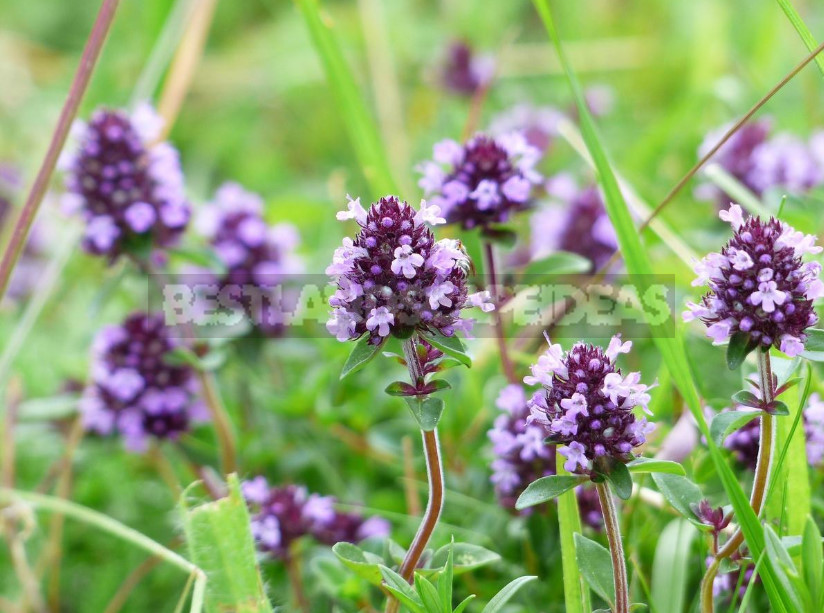
The flowers of this thyme are light purple, the length of the inflorescences can be more than 10 cm. Both flowers and leaves have a pleasant strong aroma. Thanks to this property, Thymus vulgaris is cultivated in the fields to produce essential oils.
I’ve been growing it in my garden for years. Grown, by the way, from seeds purchased under the name Thymus serpyllum. The plant in my garden liked it so much that it has been actively spread by self-seeding, and I tried to get rid of it. But during the 4-5 years that this thyme grew in my garden, I learned to limit its activity.
First, it is not necessary to plant it in a very fertile soil, however, this remark applies to thyme of all kinds. Second, trimming of bushes. I cut them twice a season. The first time – easy haircut during the apogee of flowering. This moment was usually at the beginning of July, cut off the blossoming shoots on the length of the inflorescences. The second time I strongly cut all the green shoots, managed after the first haircut to blossom again. In winter, the naked “spiders” of woody stems went away. Wintered cropped Bush without shelter. There were practically no attacks.
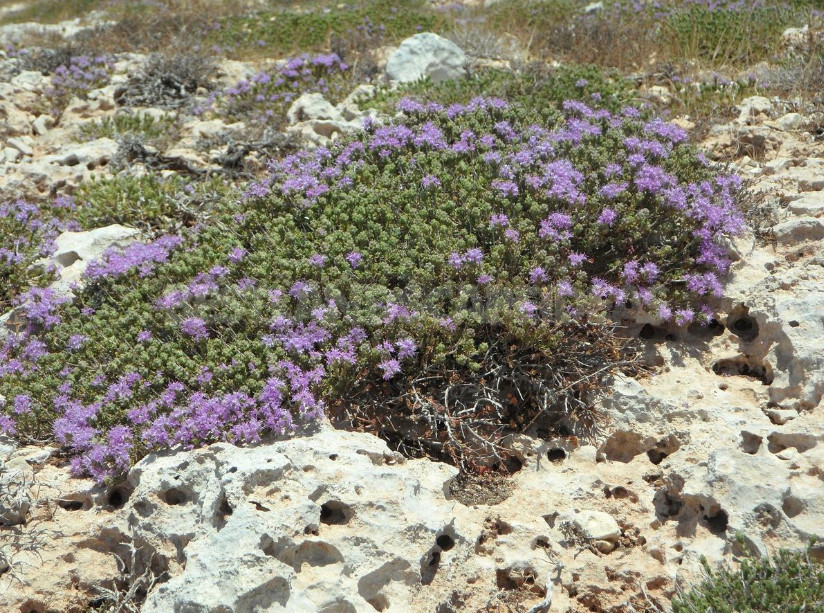
Cut and summer and autumn shoots can be dried, it is best to do it indoors, spreading them in a thin layer. In winter, added to meat or fish dishes, they will remind you of summer.
This type of thyme can be propagated vegetatively and by seeds. For vegetative reproduction, rooted stems are used, sometimes they spontaneously take root in the nodes. Easily rooted green cuttings, cut from the plant in the summer. Sowing of seeds is carried out either in March indoors or in the autumn before winter. Seedlings bloom in the second year.
Thymus citriodorus
Thymus citriodorus consider the natural hybrid x Thymus pulegioides Thymus vulgaris. It was found in southern France. The plant forms compact bushes up to 15-20 cm, blooming in June and July. This species is not to be confused with the other — it is characterized by the characteristic smell of lemon.
Thymus citriodorus leaves are smaller and slightly wider than Thymus vulgaris. Their length does not exceed 10 mm. In my opinion, this type is more thermophilic than the previous one, and without shelter for the winter can fall. Self-seeding does not. Grows moderately. This hybrid thyme from seeds is not grown, and propagated only vegetatively. Suitable for reproduction or cuttings (they are better to root at the beginning of the season), or pieces of perennial stems (they are just like thyme ordinary, have the ability to form roots in the nodes).
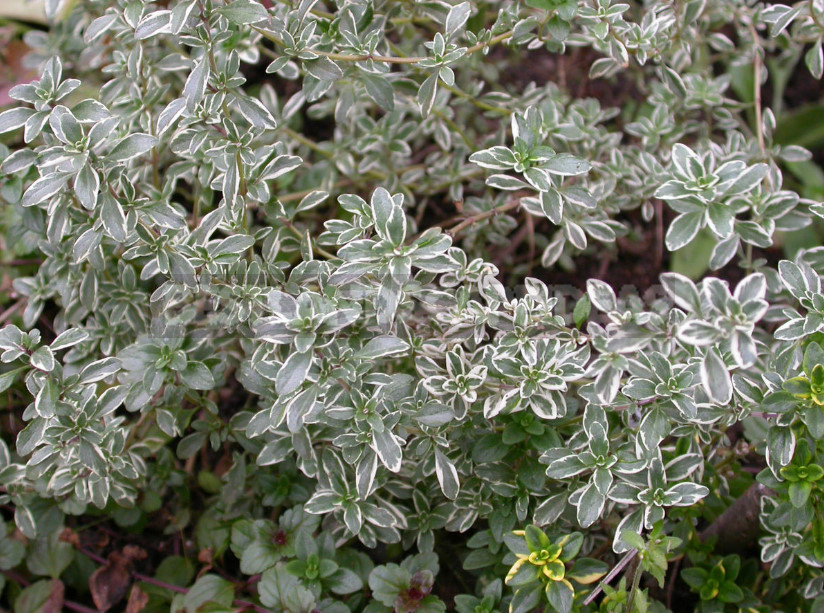
The following varieties of Thymus citriodorus are grown in the gardens:
- ‘Aureus’ – leaves Golden-yellow, lilac-pink flowers;
- ‘E. B. Anderson’ – leaves with yellow edging, lilac-pink flowers;
- ‘Silver King’ – green leaves with white edging, light purple flowers;
- ‘Silver Queen’ – silvery leaves with a white edging and the flowers are pale lilac;
- ‘Golden Dwarf’ – yellow leaves, compact Bush, lilac flowers;
- ‘Doone Valley’ – compact shrub, leaves more rounded with white-yellow-pinkish spots, pink-purple flowers.
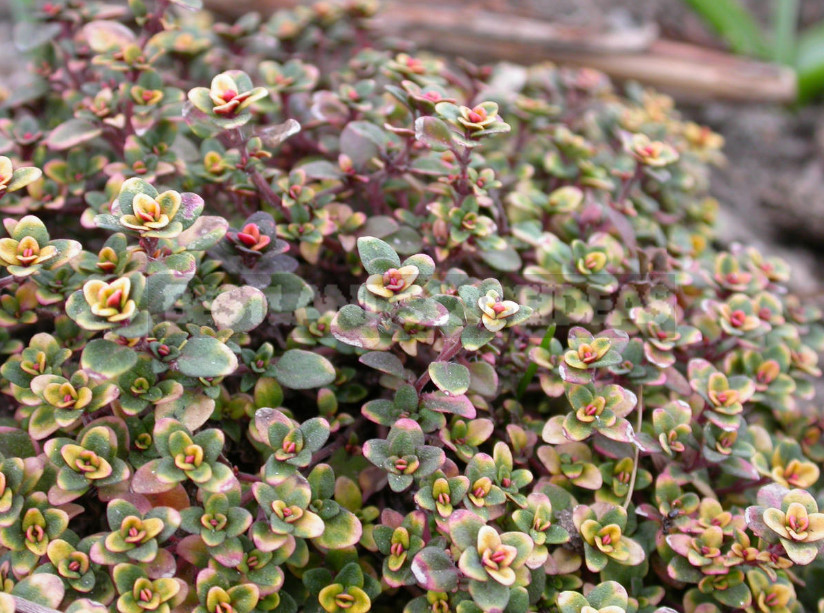
During the season, the bushes can also be cut, but there is no great need for this, since there is no too active growth. Fresh or dried sprigs of the thyme is good in marinades and fruit drinks.
